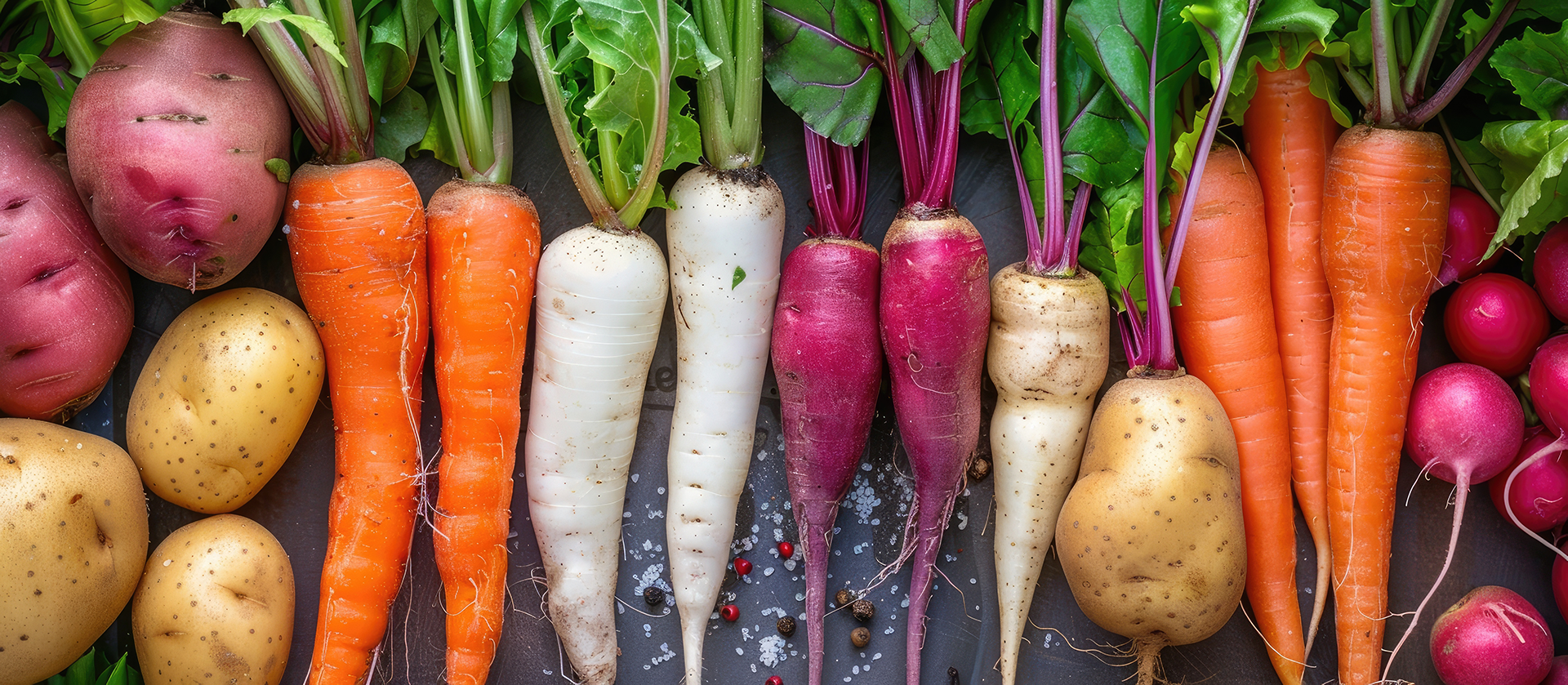Get Grounded With Root Vegetables
Published by
CONTRAVE Care Team
on
When it comes to autumnal vegetables, pumpkins and squashes get all the glory. But there’s another set of vegetables that are in season during the fall and deserve their moment in the spotlight—the humble root vegetable.
This often overlooked group includes veggies like sweet potatoes, carrots, beets, parsnips, and more. Root veggies are packed with essential nutrients and fiber that help support a healthy diet for weight loss and maintenance.
What Are Root Vegetables
Root vegetables are edible plants that grow underground. These veggies include a wide variety, from tubers like potatoes and yuca to taproots like carrots, beets, and parsnips. Other root vegetables include plants you may find as powdered herbs, such as garlic, ginger, and turmeric.
Because they develop below the soil, root vegetables absorb vitamins and minerals directly from the earth, making them incredibly nutrient-dense. Compare them to their fall rival, the pumpkin, which grows aboveground and gets its water and nutrients the long way—through its stem, from the root.
The Role of Root Vegetables in a Healthy Diet
Each type of root vegetable offers unique benefits but all share a common trait—they’re packed with essential nutrients like fiber, vitamins, and antioxidants, making them a valuable addition to any diet.
Rooted in Nutrition
One of the major reasons root vegetables are great for weight management is their high nutrient density. This means they provide a significant amount of vitamins, minerals, and fiber relative to their calorie content. When you’re trying to lose weight or maintain it, consuming nutrient-dense foods like root vegetables allows you to fuel your body efficiently.
Rooted in Fiber
Root vegetables are rich in dietary fiber, which plays a crucial role in promoting a feeling of fullness and preventing overeating. Fiber slows down digestion and helps regulate blood sugar, which can help you make smarter food choices. Add high-fiber root vegetables like jicama or parsnips to your plate—this may help you control portion sizes of higher-calorie foods while still feeling satisfied!
Rooted in Complexity
Let’s be clear—while a potato is a root vegetable, a French fry is not a healthy food. Focus on eating complex carbs, which also include fiber, providing steady energy throughout the day. Choose root vegetables with a lower glycemic index (GI); for example, sweet potatoes are a healthier option than white potatoes. Other low-GI root veggies include radishes, celery root, and sunchokes.
Rooted in Snackability
Many root vegetables are naturally low in calories, which makes them an ideal healthy snack. For instance, a medium-sized carrot has only about 25 calories. Many low-calorie root veggies, including carrots, radishes, and jicama, provide a satisfying crunch and burst of flavor. Dip them in hummus for some protein!
Some Simple Ways to Get Rooted
What root vegetables may lack in visual beauty, they make up for with their versatility and flavor—whether roasted, blended, or spiralized. Here’s how to get some more root vegetables in your diet:
- Add spiralized beets or turnips to your salads or pasta dishes. Shredded carrots can also be added to tomato sauce for some additional fiber.
- Swap out regular potato fries for baked sweet potato wedges for a healthier alternative.
- Blend cooked carrots or parsnips into soups for a creamy, nutrient-rich texture without adding cream.
- Roast a sheet pan mix of carrots, parsnips, and sweet potatoes for a colorful, flavorful side dish. Add fresh herbs like thyme or rosemary for extra flavor. (Get a recipe below.)
SHEET PAN ROASTED ROOTS
This recipe cooks five different types of nutritious root vegetables on two sheet pans—for easy cooking and cleanup! It would make a great plant-based side dish, whether you make it for a holiday meal or a regular weeknight dinner.
- Preheat oven to 425ºF. Prep two sheet pans with liners of parchment paper.
- Peel and cut 2 beets (red or golden) into bite-sized pieces. Cut 1 turnip, 1 sweet potato, 1 large carrot, and 3 parsnips into bite-sized pieces (no need to peel these, but be sure to wash them beforehand).
- Because not all root vegetables cook at the same rate, separate the cut veggies into two sheet pans—one with the beets and carrots and the second with the turnip, sweet potato, and parsnips.
- Drizzle all veggies with extra-virgin olive oil, salt, and pepper. Sprinkle fresh herbs of your choice on veggies (we like rosemary, sage, and thyme). Toss to coat and spread evenly.
- Put the two sheet pans into the oven. Check regularly to ensure no burning and even cooking. Pan one with beets and carrots will take longer (up to 50 minutes), while the second pan with potato, turnip, and parsnip could take only half as long.
- Remove from oven and top with a fresh drizzle of olive oil and more herbs. Plate the vegetables on a single large platter—so that everyone can admire how colorful your healthy side dish is!
It’s Not Hard to Root for Root Veggies
By providing a balance of complex carbohydrates, fiber, and essential nutrients, root vegetables can help you stay full, energized, and satisfied—all while keeping your diet healthy. So the next time you’re planning a meal, don’t forget to give these vibrant, nutrient-packed veggies their much-deserved spot on your plate!
CON-2232-001 10/24

